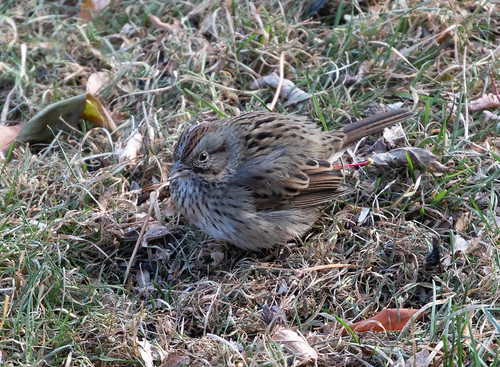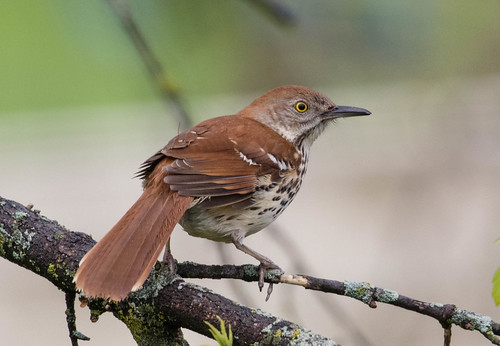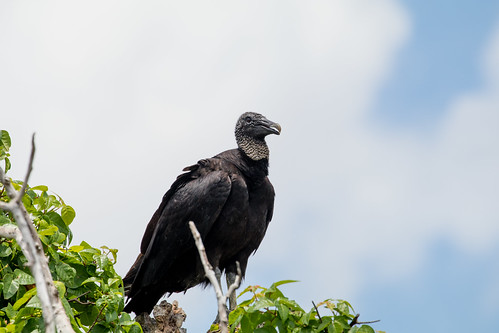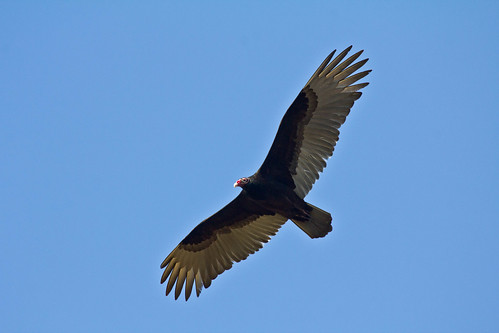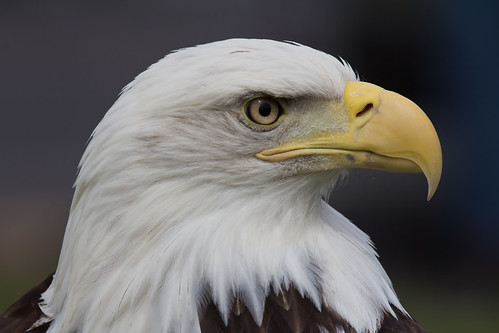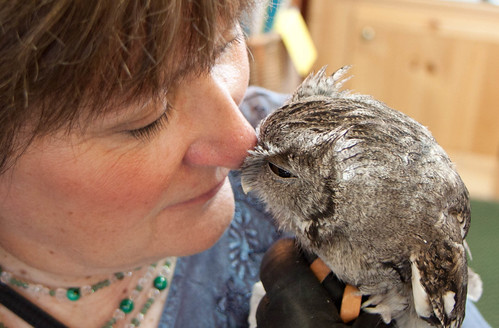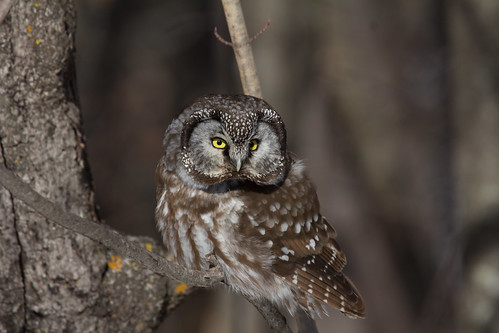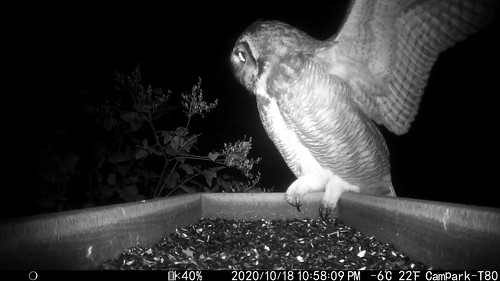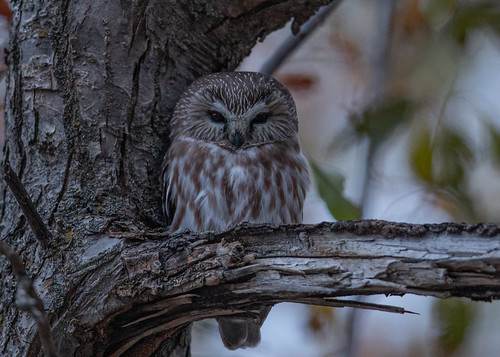November is often the worst month of the year for birding and other things, but I can't help but have warm feelings about the month. I was born in November, on Armistice Day, which my Grandpa, a World War I veteran, told me was the most important day of the whole year because it marked the end of the war to end all wars. November is also the month with Thanksgiving, for me the most perfect of all holidays. I was still a preschooler when my Grandpa told me that President Abraham Lincoln declared that we should celebrate Thanksgiving as a national day to remember all the things we were still grateful for in the middle of a horrible war. My Grandpa said that even when our lives are saddest and hardest, we can always find good things to thank God for. Of course, the first things I always thanked God for were my Grandpa and birds. I’ve always associated Thanksgiving turkey feasts with abundance, and with remembering and thanking God for the good things in my life, including birds, while not forgetting that poor dead bird on the table.
I didn’t learn about Pilgrims or fanciful stories of the first Thanksgiving until I started school, after my impressions of Thanksgiving were already deeply embedded in my brain. But by the time I was in fifth or sixth grade, I started wondering if it really was Abraham Lincoln who’d started the actual holiday. I discovered that George Washington had made a proclamation celebrating Thanksgiving in 1789, but Thomas Jefferson didn’t follow suit. After that, some presidents did declare the day a national day of thanksgiving while others didn’t, right up until Abraham Lincoln, in 1863, proclaimed a national day of “Thanksgiving and Praise to our beneficent Father who dwelleth in the Heavens.” On June 28, 1870, my favorite president of all, Ulysses S. Grant, signed into law the Holidays Act that made Thanksgiving a yearly appointed federal holiday in Washington D.C., but the date wasn’t firmly established as the fourth Thursday in November until Congress passed a law signed by FDR in 1942.
I didn’t know any of that as a preschooler, but November was always my favorite month with the best two days of the year, my birthday and Thanksgiving, celebrating both the start of my life and the happiest things I could think about.
It wasn’t until I started first grade in my Catholic school that I learned that for most Catholics, November conjures images of death starting right on November 1, All Saint’s Day, which is a holy day of obligation, so we were required to go to Mass; and November 2, All Soul’s Day, when we remember all the people who have died who aren’t canonized saints. I made it a practice to attend early morning Mass on that day every year, even though it wasn’t a holy day of obligation, specifically to remember and honor my grandmother. I vaguely remembered her, though she had died when I was quite small. Her name was Laura Farley, just like mine, and the only other things I knew about her from family lore were that she had gone to Mass every single day and that she really loved birds. As a child, whenever I saw birds flying in the sky, I thought of my grandma. Birds seemed my direct connection between the heaven I pictured up in the clouds where my Grandma was, and down here on earth, where I was. So I loved birds from the very start.
In Mexico and some other countries with both indigenous and Catholic traditions, All Saints Day and All Souls Day are celebrated as Día de los Muertos.
When I became a birder, I suddenly realized that November was one of the trickiest months to find birds, before most winter finches usually appeared in the upper Midwest but after most of our other birds had moved on. This year a bunch of interesting birds have already turned up here and there up the shore, I still have Fox Sparrows and even had an exceptionally late Lincoln’s Sparrow on November 1 and 2, but there are far, far fewer birds in my yard right now than there were even on the last day of October. November may be filled with joyful memories and gratitude for me, but bird wise, even with cool, unexpected rarities, it’s pretty sucky.
In my earliest memories, imagining birds in the sky were carrying my love to my Grandma in heaven in the clouds, I saw birds as transcendent beings carrying messages of love between here on earth and heaven above. Since I started more closely watching birds live out their lives, I’ve realized they have more important things to do with their time, but it turns out my thoughts of birds as messengers flying between heaven and earth are fairly universal. It’s no coincidence that we depict angels with bird wings.
At my mother-in-law’s funeral, the Lutheran pastor mentioned seeing a Bald Eagle in flight on her drive to the church. She asked for a show of hands of others who had seen an eagle that day, and just about everybody raised a hand. It was appealing to imagine that proved that Helen’s soul was smiling down on us, but my birder’s brain could not forget that eagles are both common and conspicuous along Lake Superior in December, often flying above county roads and highways in hopes of finding fresh roadkill.
But even with birder’s brain, it’s soothing to see birds flying in a beautiful blue sky or to hear them singing beautiful songs when I’m grieving. One of my favorite cousins died in the 1970s and his dad, my uncle, died in the 90s. Their funerals, decades apart but both in spring, were held at the same church. And a Brown Thrasher sang outside the church during both funeral Masses.
It’s unlikely that either my cousin or my uncle had ever heard of a Brown Thrasher, and I’m sure those birds were focused on attracting a mate, not mourning a human being. When my aunt died in spring in 2015, I heard a Brown Thrasher singing outside that church yet again, reassuring evidence that the habitat around the church hadn’t changed in lo those many years. Yet the comforting feeling I had listening to the thrasher soothed my soul in ways far deeper than simple ecological awareness, though I can’t explain it in mere words.
Over the years I’ve heard a great many stories from people who found comfort in seeing a special bird after losing someone dear. If your mother’s favorite bird of all is a cardinal and suddenly a cardinal starts singing from your own backyard the morning after she died, that is a lovely thing no matter how you look at it.
We attach darker symbolism to some birds in the context of death. When my family went to Disney World in November 1988, I stood with my three-year-old Tommy under a relentless hot sun in what seemed like an eternal line waiting to ride on Dumbo, watching a congregation of 100 or so Black and Turkey Vultures circling overhead. My brain kept telling me that never in the entire history of Disney World has anyone ever collapsed and died in even the longest lines and been left there for vultures to consume—I could imagine someone dropping dead in the heat, but certainly someone on the Disney staff would rush in and cart off the body before it disturbed other visitors. And vultures are rather shy about flying down where thousands of people are milling. I knew darned well they were there simply because all the buildings, parking lots, and paved walks were producing powerful thermal air currents. But even so, just thinking about all the people waiting in the heat under the watchful eye of those vultures left me uneasy.
Disney understands the connection between vultures and death. When the witch in Disney’s original animated Snow White plummets to her death, a pair of vultures swoops down to consume her, and Disney’s original animated The Jungle Book features vultures singing an amusing song about being friends to the bitter end. Vultures may take advantage of death, but they seldom impose it.
For some reason, we don’t seem to use most natural predators as symbols of death. Wolves symbolize loyalty and guardianship—the time-honored stories of Remus and Romulus being suckled by a wolf and of St. Francis of Assisi and the wolf have endured for centuries.
Foxes often symbolize cleverness and cunning. Shakespeare’s famous stage direction, “Exit, pursued by a bear,” in A Winter’s Tale makes bears seem pretty ominous, but Rudyard Kipling’s Baloo offsets that as Mowgli’s affable teacher. Lions generally are used to symbolize majesty, strength, courage, and justice, with C.S. Lewis’s Aslan in his Chronicles of Narnia a striking example. L. Frank Baum’s Cowardly Lion specifically turns the lion’s reputation for courage on its head but remains a kindly if bumbling soul even after he gets his courage.
As far as avian predators, the largest and generally considered the most majestic, the eagles, are used partly in the way lions are, to symbolize magnificence and courage. Golden Eagles, which are seen only rarely where the thirteen original colonies were, live up to that reputation, and are fittingly used as the national emblem of more countries—Albania, Germany, Austria, Mexico, and Kazakhstan—than any other animal.
America’s Bald Eagle catches fish, not prey that fight back, and is just as happy picking up fish already dead at dams, or stealing them from Osprey. The Bald Eagle gets most of its mammalian prey pre-killed on roadsides. Indeed, flying up above highways in hopes of finding fresh roadkill contributed to why so many people at my mother-in-law’s funeral had seen eagles the morning of her funeral.
Ben Franklin famously wrote to his daughter that the eagle was:
a Bird of bad moral character. He does not get his Living honestly. You may have seen him perched on some dead Tree near the River, where, too lazy to fish for himself, he watches the Labour of the Fishing Hawk; and when that diligent Bird has at length taken a Fish, and is bearing it to his Nest for the Support of his Mate and young Ones, the Bald Eagle pursues him and takes it from him.
With all this Injustice, he is never in good Case but like those among Men who live by Sharping & Robbing he is generally poor and often very lousy. Besides he is a rank Coward: The little King Bird not bigger than a Sparrow attacks him boldly and drives him out of the District. He is therefore by no means a proper Emblem for the brave and honest Cincinnati of America who have driven all the King birds from our Country...
If it's confusing why eagles aren't symbols of death, it’s understandable why vultures are, even though they so seldom actually cause death. But it seems unfair that owls, every bit as splendid and powerful as eagles, with what seems to me to be far more courage than our national emblem, are the birds associated, in cultures the world over, with death and foretelling death. The owls I’ve known personally have been intelligent, patient, and extremely gentle with their family members or, in the case of my education owl Archimedes, with me.
It’s true that to say a person is “owlish” normally means rather inoffensively bookish when real owls really are both functionally illiterate and fiercely predaceous. Disney’s large owl in Sleeping Beauty, patterned after a Great Horned or Eagle Owl, is friends with a squirrel and rabbits that would normally be its prey, and Big Mama, the kindly owl voiced by Pearl Bailey in Disney’s The Fox and the Hound, is even more nurturing toward the young mammals she’d normally pursue as prey.
But even animated and light-hearted movies and television programs are more likely to use owls as dark, malevolent omens. Toward the end of my personal favorite holiday television special, Mr. Magoo’s Christmas Carol, when the Ghost of Christmas Future is leading Mr. Magoo’s Scrooge through a graveyard, a spooky owl watches from a dark, looming, skeletal tree. And in an episode of the old television show Northern Exposure, just before a satellite drops down from the sky to kill Maggie’s fiancé, we hear a Great Horned Owl hooting. In Julius Caesar, Casca is terrified when an owl, “the bird of night did sit, / Even at noonday, upon the marketplace, / Howling and shrieking.” And no one doubts the omen of death in the title of Margaret Craven’s I Heard the Owl Call my Name.
I like what W. J. Broderip wrote in 1894:
There are few animals that have been more suspiciously regarded than Owls. Their retired habits, the desolate places that are their favorite haunts, their hollow hootings, fearful shriekings, serpent-like hissings, and coffin-maker snappings, have helped to give them a bad eminence, more than overbalancing all the glory that Minerva and her own Athens could shed around them.
Ironically, that Roman goddess Minerva wasn’t depicted with an owl nearly as often as her Greek counterpart, Athena, was—the Romans were far more superstitious about owls than the more sensible Athenians.
Not being superstitious, I consider any owl I see, day or night, a joyous and even serendipitous event, because owls are so tricky to see. By daytime, the simplest way to see them is to track down swearing crows or jays and check out who they’re yelling at. By night, owls are far, far more often heard than seen. Probably 90 percent of all the owls I’ve seen at night were called in, by my own or a wild owl’s hooting or by someone’s recording of them, and all the rest only because an owl happened to call when I was close enough to see it.
Last year, on an owl prowl with Laurens Halsey, a wonderful guide leading a field trip when I was at the Tucson Audubon Birding Festival, we got a quick but satisfying look at a Whiskered Screech-Owl and great looks at a Western Screech-Owl who even allowed me to take photos. A whole family of Great Horned Owls were calling all around us, but I didn’t get a single look at any of them. Nighttime birding is tricky.
A Boreal Owl was calling in my yard after the Chicago Cubs won the World Series (that sure seemed like a lovely sign!), and I got one quick glimpse of it flying through the yard behind mine. My glimpse of the only Eastern Screech-Owl I’ve ever had in St. Louis County was even quicker—in both cases, I couldn’t have possibly identified the bird had I not clearly heard it. But I got my most wonderful looks ever at a perfectly silent saw-whet owl when I took our springer spaniel puppy out at midnight one October evening. She had a small white spot on her liver-colored back, and suddenly there was the owl, feet extended, heading straight for that spot until, just millimeters from it, the owl suddenly realized this wasn’t a mouse—it was a whole puppy! The owl pulled up its talons, flipping over in mid-air, and alighted in a spruce tree next to our house. I watched for several minutes as it looked all about, its whole body bobbing up and down and turning this way and that as it searched for a real mouse, every now and then making eye contact with me. Tragically, that was before I was photographing birds.
I didn’t see it, but a Great Horned Owl alighted on my bird feeder a couple of weeks ago for less than a minute. I happened to have a trail cam on the feeder that night and it caught 30 seconds of the owl looking all about, moving its head up and down as much as sideways.
Most of the owls I’ve seen by day, including every saw-whet owl and Great Horned Owl, seemed far more Zenlike and still than those two. Two weekends ago, my neighbor Amber across the street rescued a saw-whet owl that must have chased a rodent into their backyard shed. When she let it go, it flew up into a large backyard tree where it sat very still, allowing me to take lots of photos in late afternoon.
As dusk approached, the little thing stretched and preened, giving me more photo ops. Most of the time, little owls are much safer when they hold still. When other birds notice them, they call out, alerting crows, jays, and robins, all of which get into full attack mode. Better to pretend you’re a bump on a log and keep your yellow eyes hidden under thick eyelids.
Larger owls seldom sit so fully exposed—the Barred, Great Horned, and Long-eared Owls that I usually see are hiding in the thick branches of a dense conifer or, in mild seasons, in thick, leafy foliage. When hunting by day, Great Gray Owls do often sit where they're more exposed.
Snowy Owls may be tricky to pick out in snowy fields, white on white, but when I do see them, there are at least no leaves to obscure the view.
However tricky owls are for me to see, they don’t seem to foretell anything. Snowy Owls give us hints about the state of the lemming population in the Arctic, but they’re even ambiguous about that—some years lots of Snowy Owls arrive down this way because the lemming population was its cyclic low and the owls spread out to find enough to eat. Other years, Snowy Owls arrive here because the lemming population has been wonderfully high, allowing Snowy Owls to produce exceptional numbers of young. Then, as the adults settle into their winter territories, a lot of young ones can’t get a toehold and head our way. In both kinds of years, a great many of those Snowies that made it our way do return to the Arctic come winter’s end. So far this November, I haven’t heard of any Snowy Owls our way.
Weatherwise, this year’s October winter seems to have melted into a bit of a November spring. I’ve yet to see an owl so far this month. Great Horned Owls maintain a pretty large winter territory, and the ones that sometimes show up in my yard may be a mile away for a week or more between visits, and even when they’re around, unless they hoot, crows yell out, or I luck into a trail cam video, I hardly ever know when one is literally in my own backyard. Most saw-whets and long-eareds are south of my area now, but some saw-whets remain through the winter, so I’m ever hopeful of seeing one. And when I do, I know it isn’t an ominous sign of death or malevolence—our paths simply crossed for one brief shining moment. And in a month when darkness reigns, that kind of moment can make all the difference.


